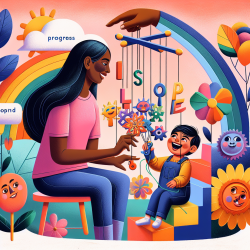Introduction
As a practitioner in the field of speech-language pathology, understanding the intricacies of language acquisition in children with Autism Spectrum Disorder (ASD) is crucial. A recent study titled The Source of Palm Orientation Errors in the Signing of Children with ASD: Imitative, Motoric, or Both? provides valuable insights into the unique challenges faced by signing children with ASD. This blog explores the findings of this study and discusses how practitioners can implement these insights to improve therapy outcomes.
The Study: A Brief Overview
The research conducted by Shield, Igel, Randall, and Meier (2020) focused on palm orientation errors in the signing of children with ASD. The study analyzed a single child over a 10-year period, examining the four parameters of sign articulation: handshape, location, movement, and palm orientation. The findings indicated that while errors in handshape, location, and movement decreased over time, palm orientation errors remained high, suggesting both imitative and motoric origins.
Key Findings
- Imitative Differences: The study suggests that palm orientation errors may stem from differences in imitation, where children with ASD imitate signs as they appear from their perspective, leading to 180-degree reversal errors.
- Motoric Challenges: Motor difficulties, such as the inability to properly supinate or pronate the forearm, were also identified as contributing factors to palm orientation errors.
- Longitudinal Data: The study's longitudinal approach revealed that palm orientation errors persisted into adolescence, highlighting the need for targeted interventions.
Implications for Practitioners
For practitioners working with signing children with ASD, these findings underscore the importance of addressing both imitative and motoric challenges in therapy. Here are some strategies to consider:
- Focus on Imitation: Incorporate exercises that enhance the child's ability to map others' movements onto their own body, thereby reducing reversal errors.
- Enhance Motor Skills: Develop activities that improve fine motor skills, particularly those involving forearm supination and pronation.
- Monitor Progress: Regularly assess the child's progress in reducing palm orientation errors, adjusting therapy techniques as needed.
Encouraging Further Research
The study highlights the complexity of palm orientation errors and the need for further research to fully understand their origins and implications. Practitioners are encouraged to contribute to this body of research by documenting their observations and sharing findings with the broader community.
Conclusion
Understanding the dual origins of palm orientation errors in signing children with ASD is vital for developing effective therapy strategies. By addressing both imitative and motoric challenges, practitioners can enhance language acquisition and improve outcomes for children with ASD. To read the original research paper, please follow this link: The Source of Palm Orientation Errors in the Signing of Children with ASD: Imitative, Motoric, or Both?










